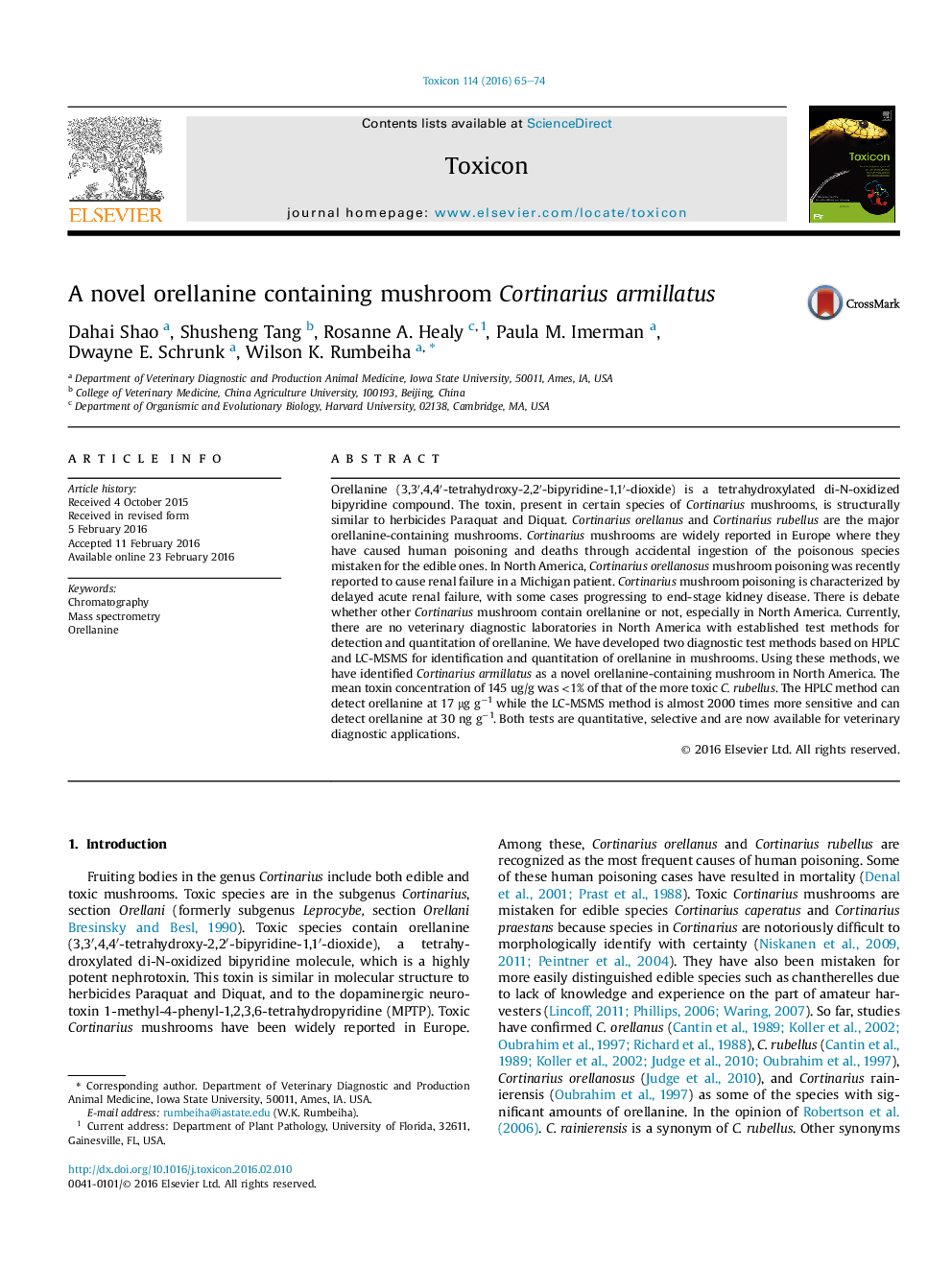| کد مقاله | کد نشریه | سال انتشار | مقاله انگلیسی | نسخه تمام متن |
|---|---|---|---|---|
| 2064076 | 1544122 | 2016 | 10 صفحه PDF | دانلود رایگان |

• Cortinarius armillatus identified as an orellanine containing mushroom.
• The concentration of orellanine in C. armillatus was lower than that of C. rubellus.
• Identity confirmed phylogenetically and morphologically for C. armillatus.
• Two confirmatory analytical test methods for orellanine in analysis in mushrooms have been established.
Orellanine (3,3′,4,4′-tetrahydroxy-2,2′-bipyridine-1,1′-dioxide) is a tetrahydroxylated di-N-oxidized bipyridine compound. The toxin, present in certain species of Cortinarius mushrooms, is structurally similar to herbicides Paraquat and Diquat. Cortinarius orellanus and Cortinarius rubellus are the major orellanine-containing mushrooms. Cortinarius mushrooms are widely reported in Europe where they have caused human poisoning and deaths through accidental ingestion of the poisonous species mistaken for the edible ones. In North America, Cortinarius orellanosus mushroom poisoning was recently reported to cause renal failure in a Michigan patient. Cortinarius mushroom poisoning is characterized by delayed acute renal failure, with some cases progressing to end-stage kidney disease. There is debate whether other Cortinarius mushroom contain orellanine or not, especially in North America. Currently, there are no veterinary diagnostic laboratories in North America with established test methods for detection and quantitation of orellanine. We have developed two diagnostic test methods based on HPLC and LC-MSMS for identification and quantitation of orellanine in mushrooms. Using these methods, we have identified Cortinarius armillatus as a novel orellanine-containing mushroom in North America. The mean toxin concentration of 145 ug/g was <1% of that of the more toxic C. rubellus. The HPLC method can detect orellanine at 17 μg g−1 while the LC-MSMS method is almost 2000 times more sensitive and can detect orellanine at 30 ng g−1. Both tests are quantitative, selective and are now available for veterinary diagnostic applications.
Journal: Toxicon - Volume 114, May 2016, Pages 65–74